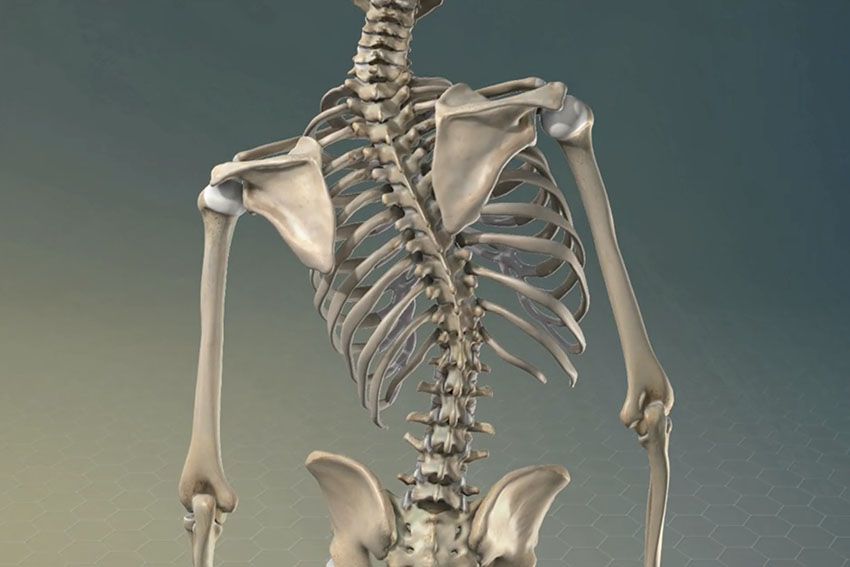
About Scoliosis
The spine is made up of a stacked alternating vertebral bodies and disks. The spine is usually straight on anterior posterior x-ray. Scoliosis is an abnormal curvature of the spine. The spine may look like a C or S on X-ray. Scoliosis may arise from birth abnormalities where the spine was formed wrong, such as missing half of a vertebrae or from changes resulting from arthritis. The cause of scoliosis in young people is unknown and is called idiopathic even though certain genetic traits have been defined.
Children are commonly screened at school for scoliosis, especially at the time of the growth spurt when the development and progression is most common. Patients suspected of having scoliosis undergo a history and physical and relevant laboratory investigations. This may include x-rays, serial x-rays, CT and MRI. Patients found to have a spinal curvature of greater than 10 degrees are diagnosed as scoliosis.
Scoliosis alters the mechanics of the back and puts significant strain on the vertebral bodies, disks, muscles and even the nerves leading to chronic pain and suffering.
Scoliosis Treatment
Scoliosis treatment is complex and requires individualization from a spine doctor at our Newton clinic. Smaller curvatures are watched while larger curvatures greater then 20 to 30 degrees may require bracing. Surgery is usually reserved for very large curvatures greater then 45 to 50 degrees which have high likelihood to progress even more. Other indications for surgery include pain, weakness, difficult mobilizing and breathing. Surgery usually involves spinal fusion surgery, this may be done through the front (anterior), side (lateral) or back (posterior) combined with spinal instrumentation (screws and rods). Click here to read Dr. Spivak's success stories by real patients.
Overall prognosis of scoliosis depends on the likelihood to progress. Patients with larger curvatures, thoracic curves, double curves and immature spines (such as adolescents) have higher chance or progressing.
For more information on spinal fusion surgery for scoliosis at our Newton clinic, please call us today. Executive Spine Surgery can be reached at (908) 452-5612.
Scoliosis FAQS
If scoliosis is severe it can affect your heart, lungs, gut, spinal cord and nerves, producing a large range of problems ranging from difficulty to breathing to difficulty walking. Fortunately this is not common. Many cases of scoliosis respond to conservative treatment (such as bracing) and do not require surgery.
Scoliosis is the curvature of the spine. The spine may look like a “C” or “S” on x-ray. Scoliosis may result from juvenile scoliosis in children (unknown cause), diseases or injury of the spine, arthritis, neurological disease, surgery, etc. Neurological disease such as a spine tumor may cause back muscle weakness, which can result in scoliosis. It is not caused from being out of shape or weak.
Untreated scoliosis can cause a hunch back called kyphosis. Treatment depends on the age, the severity of the scoliosis and whether it is causing problems. Children are watched for scoliosis during their growth spurts. If the scoliosis is treated early with a brace then sometimes future surgery can be prevented. If scoliosis becomes severe it can affect posture, walking, lungs, heart, gut and strength, as well as causing pain. People with significant scoliosis should be closely monitored by their doctor or spine surgeon.
Yes, scoliosis can develop later in life from injury, back surgery, cancer, or arthritis.
Severe scoliosis can cause significant spinal deformity, which alters the shape of the back, causing weakness and difficulty walking. If you think your scoliosis is hindering your movement, I would recommend seeing spine surgeon who specializes in scoliosis surgery.
Yes, scoliosis can cause back pain. As you age the spine wears out in a process called degeneration. This wearing out can worsen the scoliosis. Scoliosis can cause pain and usually the pain and dysfunction is related to severity. That is the more severe the scoliosis the more pain and dysfunction.
The back muscles can be affected by: 1) A neurological problem such as s spinal cord tumor can cause weakness in the muscles resulting in scoliosis. 2) The curved spine can strain the back muscles. 3) The curved spine can pinch off spinal nerves, weakening the back muscles.
The chiropractor may help pain, but is unlikely to improve the deformity. Brace or surgery is usually needed to correct or stop the progression of scoliosis. I would discuss it with your spine surgeon.
Typical childhood (idiopathic) scoliosis progresses during the child’s growth spurt and is less concerning after you stop growing. It may worsen from arthritis in old age. Other rare types of scoliosis may progress after you stop growing.
Mild scoliosis has little effect on height. Severe scoliosis causes a severe curve in the back and often a hunched back (kyphosis) making the patient shorter.
